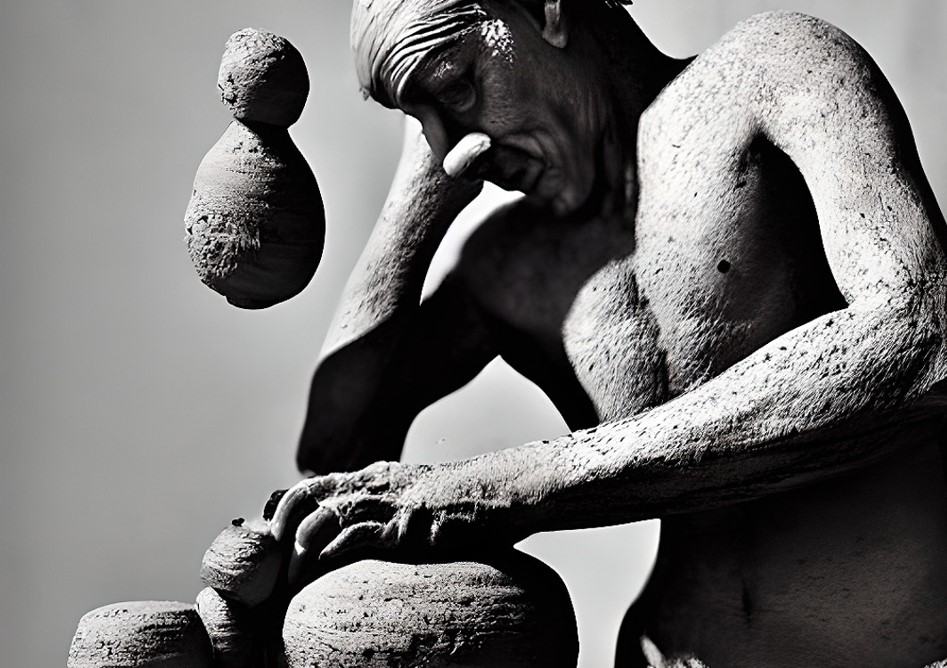The Comprehensive Guide To Selling Sculptures
Are you an artist who creates sculptures? If so, you may be wondering how to sell your sculptures. In this blog post, we’re going to give you a comprehensive guide to selling sculptures. We’ll cover everything from finding the right marketplace to promoting and pricing your sculptures. We’ll even touch on shipping and after-sale care. By the end of this post, you should have all the information you need to start selling your sculptures.

Table of Contents:
Introduction To Selling Sculptures
If you’re interested in selling sculptures, this is the blog for you. In this post, we’ll provide an introduction to selling sculptures and discuss some of the key considerations you should take into account when making a sale. We’ll also provide a guide to getting started with selling sculpture and offer advice on how to make your work stand out from the crowd.
When selling sculpture, it’s important to understand how buyers perceive different types of art. For example, bronze sculptures are often perceived as being more prestigious than other materials such as stone or wood. This is because bronze is a strong metal that can last for many years without deteriorating. Therefore, if you’re selling a bronze sculpture, it’s important to make sure that your artwork matches this impression.
On the other hand, some buyers may prefer artwork that’s more contemporary in nature. This means that your work should feature bright colors and strong lines that are easy to see. If you sell sculpture with a modern aesthetic, it will likely be more popular than artwork featuring traditional features. It’s also important to consider price when selling sculpture – high-priced pieces tend to be more successful than low-priced pieces.
The Sculpture Marketplace
The type of sculpture marketplace you use will largely depend on what sort of sculpture you specialise in. If you are looking to target buyers who are interested in purchasing high quality, expensive sculptures, then an auction house may be the best place to list your artwork. On the other hand, if you sell more affordable pieces that would appeal to a wider range of buyers, an online marketplace like Etsy may be a better option. There are also many Sculpture galleries open to submissions from artists, so this is another avenue you could explore.
When you are creating your sculpture, it is important to think about what market you want to reach. If you are selling pieces that are expensive and of high quality, then an auction house may be the best option for you. However, if your sculptures are more affordable and of a lower quality, then an online marketplace like Etsy may be a better choice. There are also many sculptors who offer gallery representation (https://www.kiparstvoslikarstvo.si/), so this is another avenue to explore when thinking about how to sell your work.
Promoting Your Sculptures
To promote your sculptures, you first need to be an expert in this field. Secondly, you must be able to reach out to a wide range of people who are interested in buying sculptures. You also need to have a way of tracking how well your promotion is doing so that you can make necessary changes. For example, if sales are not meeting expectations, you may need to adjust the type or format of your promotion.
There are a number of ways to promote your sculptures. You can post about them on social media, write articles about them, or host exhibitions of your work. Each approach has its own strengths and weaknesses. For example, posting about your sculptures on social media can reach a large audience quickly, but it may not be as effective when it comes to generating sales. Writing articles is a more targeted way of promoting your work and can result in increased traffic and sales if done well. However, writing an article takes time and effort, which may not be feasible for everyone. Hosting an exhibition is also a good way to get exposure for your work, but it is more expensive than other forms of promotion.
Pricing Your Sculptures
When pricing your sculptures, it is important to get an appraisal. This will help you to find the market value of your sculpture and will give you a better idea of what comparable sales are.
Once you have determined the market value of your sculpture, it is important to research comparable sales. Doing this will help you to determine a fair price that meets both your goals and the market conditions.
There are a few factors that you should consider when pricing your sculptures. These include the material and craftsmanship of the sculpture, its size, and where it will be displayed. You might also want to factor in shipping and handling costs, as well as any applicable taxes.
Once you have determined a price for your sculpture, it is important to set a precedent for future sales. This way, buyers can expect similar prices from you in the future. It is also important to state clearly how payment will be handled in your listing.
Lighting And Displaying Your Sculptures
When it comes to displaying your sculptures, there are a few different types of light that can be used. Here are some tips on how to choose the best light for each situation
- Outdoor displays should use natural sunlight as it’s a good source of light that is warm and bright.
- Indoor displays can be lit with indirect lights or lamps that give off a soft glow.
- For cases where delicate sculptures need to be displayed in glass, low wattage bulbs are best suited as they emit a pale yellow or greenish hue.
Above all else, take into account what effect you want your sculpture display to have before selecting any type of lighting. By following these simple guidelines, you’ll create an amazing piece of art!
Shipping And Packaging Your Sculptures
Shipping and packaging your sculptures is an important step in ensuring that they arrive safely and in a condition that meets your expectations. It’s important to work with an expert to ensure the packaging is done correctly. Additionally, it’s important to get the right insurance for your shipment. Finally, understand the shipping process from start to finish so you can make an informed decision about which company to use.
There are a few things to consider when shipping your sculptures. The first is the weight and size of the sculpture. In order to insure proper packaging and safe transport, it’s important to know the weight and dimensions of your sculpture. You can use an online tool or contact a shipper who specializes in shipping large pieces of art.
The second consideration is the type of packaging you will need. There are several types of packaging that can be used for sculptures: cardboard box, corrugated box, heavy-duty crate, wooden crate, or foam block. It’s important to choose the right type of package for your sculpture based on its size, weight and intended usage. For example, a small bronze statue would be best packed in a cardboard box while a larger marble statue would require more protection with a heavier-duty crate or foam block.
Once you have determined which type of packaging is best for your sculpture and weighed it down appropriately, you need to select the shipping company that will deliver it to your door. There are many companies who offer shipping services including UPS, FedEx and USPS. It’s important to do some research before choosing a company as some may have Better Business Bureau ratings lower than others. Once you have chosen a company, set up an appointment so they can come pick up your sculpture from its storage location.
After The Sale: Care And Maintenance Instructions
It is the buyer’s responsibility to maintain their new sculpture. This means that they should clean it with a soft, dry cloth—never use water or chemicals. If you have any questions concerning care and maintenance, please contact an expert.
If you are not familiar with the care and maintenance of a sculpture, it is advisable to seek out guidance from an expert. There are a few things that you can do to help keep your sculpture in good condition: Keep it clean. Clean it with a soft, dry cloth—never use water or chemicals. Protect it from weathering. Keep it out of direct sunlight and away from rain or snow.
Resources For Selling Sculptures
There are a number of resources available for selling sculptures. The best resources are usually art experts, who can provide you with advice and guidance on how to sell your sculpture. You can find art experts by searching online or visiting art galleries. Once you have found an expert, it is important to ask them questions about selling your sculpture. This will help you to gain a better understanding of the Selling Sculptures process, and to make sure that your sculpture is presented in the best possible way.
The best way to sell a sculpture is to create a presentation that is tailored to the buyer. You should consider what type of buyer you are targeting, and how you want them to view your sculpture. For example, if you are selling a sculpture to a gallery, then make sure that the artwork is displayed in an appropriate way. If you are selling your sculpture online, then it is important to provide as much information as possible about the piece, including dimensions and images of the mount.
Good presentation will go a long way in helping buyers find and purchase your sculptures. However, it is also important to remember that sculptures are unique pieces of art, and no two sculptures are going to be sold exactly the same way. This means that there is room for creativity when it comes to marketing and selling sculptures.
To Wrap Things Up
Selling sculptures can be a rewarding experience for both the artist and the buyer. By following the tips in this blog post, you can make sure that your sculptures are successful. If you take the time to find the right marketplace, promote your work effectively, and price your sculptures fairly, you’ll be well on your way to making sales.
